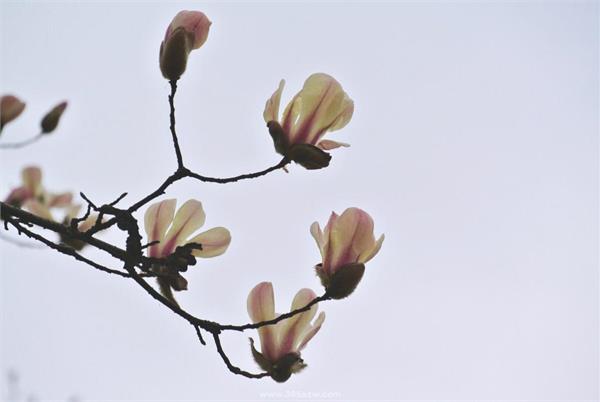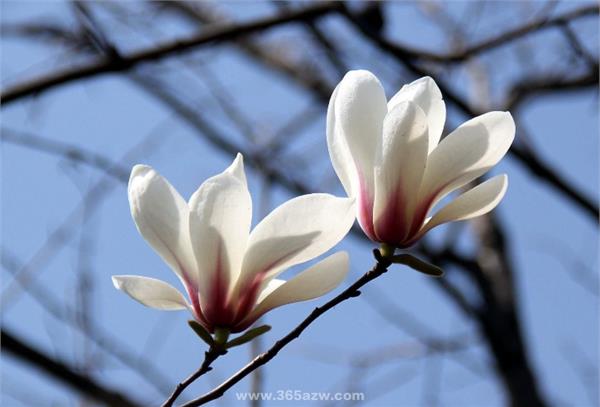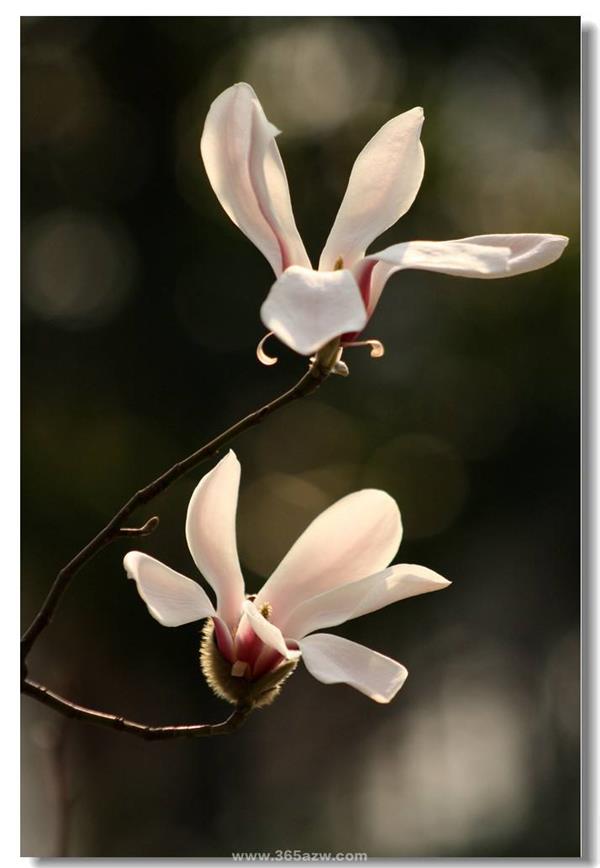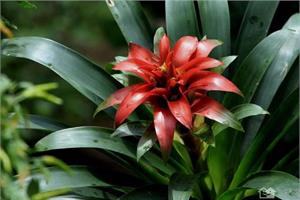Detailed introduction of culture methods and matters needing attention of magnolia
There are three sepals, yellowish green, lanceolate, about 1 stroke of petals and 3 long. Let's take a look at the culture methods and precautions of magnolia.

Detailed introduction of culture methods and matters needing attention of magnolia
Magnolia flowers like light and bear shade a little. Like warm and humid climate, but also can withstand cold. Like fertile, moist and well-drained sandy soil, do not tolerate drought, avoid food, and grow poorly on dry, loam and clay. The root is fleshy, afraid of flooding, the wound is getting worse, and transplanting is not easy to survive.
Small deciduous trees of magnolia, up to 5 meters high. The wood is fragrant, the branchlets are purple-brown, and the buds have fine hairs. Leaves simple, alternate, Obovate-elliptic; with stipules scars. Flowers bisexual, solitary, terminal, sepals 3, yellowish green, lanceolate, ca. 3 as long as petals; petals 6, purplish red outside, inner surface subwhite; pistil numerous, pistil sessile. The fruit is round in shape. Root is fleshy.
Culture methods of Magnolia
1. Soil
Magnolia likes fertile, moist and well-drained sandy soil, is not resistant to drought, taboo, and grows poorly on dry, loess and clay.
2. Watering
Magnolia avoid drought and waterlogging, usually to ensure water supply, often spray water to the leaves, increase the air dampness, so as to avoid yellow leaves and fallen leaves.
3. Sunshine
Magnolia like light, slightly shady, so usually pay attention to the problem of lighting, so that magnolia fully accept the sunlight.
4. Temperature
Magnolia prefers a warm and humid climate and can withstand cold, but it still has to be moved to indoor insulation for breeding when the temperature is low in winter.

5. Fertilization
Magnolia flowers like fertilizer, so it is necessary to apply fertilizer in time, fertilizing once before and after flowering, mainly phosphorus and potassium fertilizer, applying mature manure as base manure from October to November every year, and topdressing available nitrogen fertilizer for 2 or 3 times during sprouting and branching after flowering.
6. Insect pests
The main pests of Magnolia are Haitong cotton scale, coal fouling disease, etc., which will reduce the ornamental value, and can be sprayed with Popper 1-3 degree stone sulfur mixture; during nymph incubation, 40% omethoate EC 1000 times and 10% pyrazine wettable powder 1500 times solution can be used. When adults occur, they are evenly sprayed with 800ml 1000 times liquid or 40% speed EC 1500 times. Adding appropriate amount of diesel oil during spraying can increase its permeability, and the liquid must be sprayed thoroughly.

7. Pruning
Magnolia must be sprouted and pruned in order to form a tree, so as to facilitate the tree-shaped growth of magnolia.
Propagation methods of Magnolia
(1) seed propagation
① seedling raising
Select the seeds of strong plants as the mother seed, mix the harvested mature seeds with coarse sand in the first and middle of September, rub them repeatedly to remove the red grease layer, rinse and dry them with clean water and dry them in fine wet sand for low temperature treatment, generally choose the leeward side, dig the pool and mix the fine sand covering grass with 2-3 times the seed amount to moisturize, often check and keep moist, sow eight seedling beds in time when the seed cracks are exposed, and open ditches according to the row spacing of 30 meters. The ditch is 3 meters deep, cover a little soil after sowing, keep it moist for about 1 month, and pay attention to prevent stagnant water and mildew during the sand storage period.
② transplanting
After 2 years, the seedlings can be transplanted when the seedlings are 80-100 cm high, and the seedlings can be planted along with them.
(2) grafting
It can be grafted throughout the growing season, but the survival rate of grafting is the highest in late May, and bud grafting is mostly used in producing areas. The scion should choose the branches with good development, strong growth, dormant buds and no diseases and insect pests, the annual scion is better, and the rootstock should be the same thickness as the scion. Choose sunny weather, no wind or breeze grafting in the afternoon, when grafting, insert the bud into the incision of the rootstock, make the bud stick to the cortex of the rootstock, fasten it with a rope, and the seedlings can emerge in half a month.
(3) raising seedlings by cuttings.
Select more than two-year-old branches, cut into about 60 square meters, remove leaves, in summer and autumn cloudy and rainy days, insert into the wet seedling bed, 20-30 meters into the soil, compacted and watered, you can survive and transplant the following year.
The efficacy and function of Magnolia
1. The garden use of magnolia.
Magnolia is a characteristic ornamental plant that blossoms in early spring. when spring comes, purple-red flowers are blooming with each other, especially beautiful. Planting them in some scenic spots will add a lot of color to the scenery of the scenic area. At the same time, magnolia can also be planted in some courtyards, which can play an important role in beautifying the environment and purifying the air.

2. The medicinal effect of magnolia.
The flowers of magnolia can be used as medicine. Magnolia can be harvested when it is not fully open in spring, and then dried in the sun. It tastes bitter and cold after it is used as medicine, and it can enter the liver and spleen meridians, diuretic seed elimination and moistening lung cough is its most important effect. it is usually used for the treatment of diseases such as human cough and hemoptysis, and magnolia also has a certain therapeutic effect on human heavy tongue and alcoholic jaundice.
3. Magnolia can cure the lump in the fish.
Magnolia can be used for the treatment of choking in fish. it is very simple to use magnolia in treatment. you only need to take 25 to 30 grams of dried magnolia, add an appropriate amount of water to fry it, and drink it once a day. It can make the symptoms of choking disappear quickly.
Can enter the liver meridian and spleen meridian, diuretic seed and moistening lung cough is its most important effect, usually used for human cough and hemoptysis and other diseases, in addition, magnolia also has a certain therapeutic effect on human heavy tongue and alcohol jaundice.
3. Magnolia can cure the lump in the fish.
Magnolia can be used for the treatment of choking in fish. it is very simple to use magnolia in treatment. you only need to take 25 to 30 grams of dried magnolia, add an appropriate amount of water to fry it, and drink it once a day. It can make the symptoms of choking disappear quickly.
Related
- Wuhan Hospital Iron Tree Blooming Result Was Instantly Frightened by the Gardener Master
- Which variety of camellia is the most fragrant and best? Which one do you like best?
- What is the small blue coat, the breeding methods and matters needing attention of the succulent plant
- Dormancy time and maintenance management of succulent plants during dormancy
- Minas succulent how to raise, Minas succulent plant pictures
- What are the varieties of winter succulent plants
- How to raise succulent plants in twelve rolls? let's take a look at some experience of breeding twelve rolls.
- Attention should be paid to water control for succulent plants during dormant period (winter and summer)
- Watering experience of twelve rolls of succulent plants
- Techniques for fertilizing succulent plants. An article will let you know how to fertilize succulent plants.



